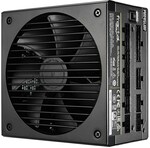This is my first deal so go easy please ahah!
Havent seen this posted anywhere so thought id share it with you guys!
· UltraFlex DC wires for effortless cable-routing and connectors
· Custom-tailored 140 mm fan with exceptionally low minimum speed
· 80 PLUS® Platinum Efficiency for optimized electrical performance
· Fully modular design for reduced clutter and maximum ease of installation
· Extensive 10 year warranty
Ion+ Platinum - The Power of Silence
The Ion+ Platinum is a high-performance fully modular PSU with whisper-quiet operation, enhanced cable flexibility and superior output quality.
A user selectable semi-passive Zero RPM mode maintains pure silence under light loads, and the custom-tailored 140mm fan with FDB bearings barely breaks a whisper under heavy use. Revolutionary UltraFlex cable with its ultra-high strand count wire and special insulation bends and twists effortlessly to make installation and cable-routing a breeze.
Ion+ is available now in 560, 660, 760 and 860 watt capacities, all with 80PLUS® Platinum Efficiency, 10-year warranty, and a full electrical protection suite for your peace of mind.





Good timing… now just got to let this baby sit for a couple of years until my RTX 3080 gets here